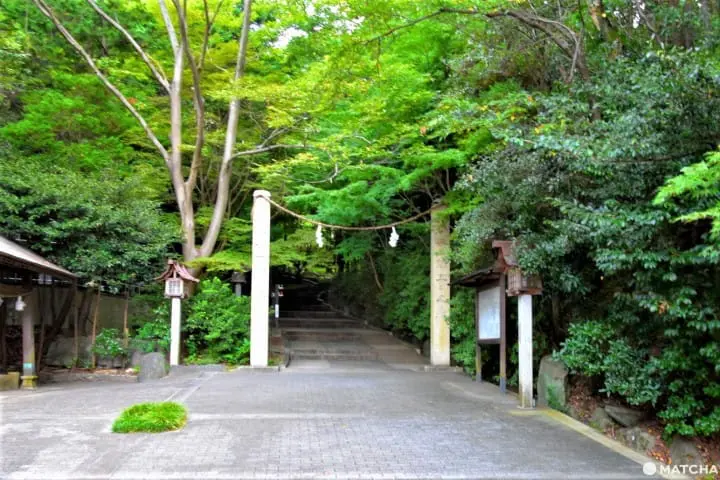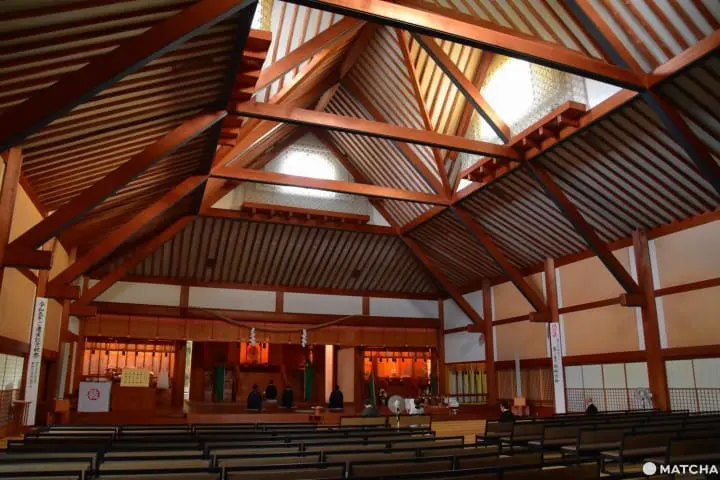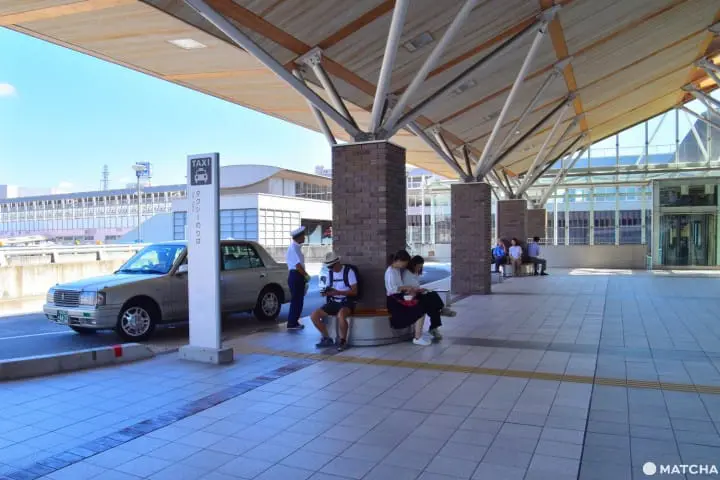Mt. Shinto, Okayama - Experience Spiritual Tradition During The Sunrise

Shinto shrines are found all across Japan. On Mt. Shinto in Okayama, you can take part in nippai, a sunrise meditation and prayer session. The Shinto tradition places importance on the sun, and this experience allows all to take part in this peaceful and enlightening custom on a mountain summit.
Mt. Shinto, Okayama - Observe the Tradition of the Sun

You will spot temples and shrines everywhere you go in Japan. While temples are the place of worship in Buddhism, shrines are associated with Japan's indigenous set of beliefs known as Shinto.
Similar to animistic religions, Shinto identifies deities (called kami) in nature, ancestors, and other people and objects. The sun is of particular value.
In Shinto, the supreme kami is the sun goddess, Amaterasu. Additionally, Mt. Fuji is associated with the popular tradition of raiko,* watching the first sunrise of the new year. The sun has been a part of Japanese tradition for centuries.
At Mt. Shinto in Okayama, you can participate in the ritual of nippai, which pays respect to the sunrise.
*Raiko: The mountaintop sunrise has been viewed in Japanese religious tradition as the appearance of the Amida Buddha on a cloud.
Nippai - Kurozumikyo and Revering the Sun

A 20-minute drive from JR Okayama Station, Mt. Shinto is home to the headquarters of Kurozumikyo (Japanese), a religion with its roots in Shinto.
The founder, Munetada Kurozumi, is said to have achieved enlightenment by praying to the sun at the brink of death in the 19th century. Because of Kurozumi's experience, his followers have continued praying to the sunrise in a ritual known as nippai.
Kurozumikyo proactively engages in discourse with people of other religions, as well as non-religious people. As a result, at Mt. Shinto, you will find people of various faiths and nationalities participating in nippai. I, the author of this article, also took part in the ritual in September 2019.
Experiencing Nippai atop Mt. Shinto

Nippai begins 20 minutes before sunrise. I recommend arriving around ten minutes in advance to give yourself time to get into the proper state of mind.
Nippai takes place on Mt. Shinto's summit, from which you can see the city and distant mountains below. When I arrived, the other participants were sitting silently amidst the morning glow.
*There is no dress code to participate in nippai. However, to be respectful, avoid overly casual clothes.
*Photos are permitted during nippai, but be careful not to disturb the prayer.

Nippai commenced 20 minutes before sunrise. At first, the current head, Munemichi Kurozumi, recited the misogi harae no kotoba and the oharae no kotoba to purify the ritual.
No matter how hard we try not to, we become stressed by the work and chores of our daily lives. These prayers ask that our frustrations and confusion be removed and that we become enlightened to the inherent beauty of our souls.

After the reading of the prayers, meditation time was held until sunrise. In Kurozumikyo tradition, you envision the sun entering your mouth and continuing through to your stomach. You aren't required to meditate by this method, though. Be sure to ask the staff for more details to learn more.
As dawn settled in, the birds began to chirp and a cool breeze washed over me. Sitting in the silence, my once nervous heart became relaxed.

Then came the sun. As if to signal the sunrise, a wadaiko drum sounded. I was deeply moved watching the sun color the morning sky.

Facing the sunshine bright atop the mountains, we sang songs thanking the sun's blessing. We then bowed several times to the sun. The ritual ended with the two bows and two claps, a tradition in Shintoism. If you want to participate in the full experience, just follow along with the people around you.
Nippai lasts only 30 to 40 minutes, but it is a very rejuvenating and unforgettable experience.
The Daikyoden - Architecture of Gratitude

After nippai, stop by the Daikyoden Hall nearby.
Like Ise-jingu Shrine, the Daikyoden is in the architectural style of a traditional rice granary. At the heart of Shinto is gratitude for the nature that sustains human life. The shrine's construction takes inspiration from a granary because rice is seen as a symbol of nature's blessings.
The architect, Shizutaro Urabe, is from Okayama and has worked on impressive projects like the Kurashiki Ivy Square (Japanese) and Kurashiki International Hotel.

After nippai, an offering ritual is held at the Daikyoden that is open to anyone to watch.

Displayed at the entrance to the Daikyoden is traditional Okayama ceramics, Bizen-yaki.
This distinctive earthenware is part of the roof's adornment, made by renowned pottery artist, Ken Fujiwara. He refused all other work for two years as he crafted Bizen ware for the Daikyoden.

Also at the entrance is an offertory box, in which you can put in an offering. You can give the amount you feel comfortable with. There is no required minimum.
Search for highway buses or night buses in Japan to get to Okayama
Marukoto Center - Treasured Art and Bizen Ware

Picture courtesy of KUROZUMIKYO
The Marukoto Center (Japanese) is located close by the Daikyoden.
Inside you can find displays of Bizen pottery made by Ken Fujiwara, and his uncle, Kei Fujiwara, who was deemed a Living National Treasure by the Japanese government. Modern pieces by artists such as Tadanori Yokoo (Japanese) are also stored here.
You can request to visit the center by contacting the email address provided at the end of this article.
Gratitude for the Blessings of Life

Muneyoshi, the son of the eighth-generation Munemichi Kurozumi, explains, "Shinto is based on gratitude for all things that give us life."
We are thankful that we can be healthy and travel safely, which, of course, requires effort on our part. However, we also can be grateful for the help we receive from people, the nature that provides food for our nourishment, and a lot of other things.
The Japanese word for "thank you" is "arigato," and originally implied that existence was hard.
"One of the prayers of Shinto is that we recognize the need for gratitude," said Muneyoshi.
Shinto also values the removal of kegare. Kegare is a state of loss, confusion, or unhealthiness.
"Prayer and directing attention to the sun is a way for us to purify our hearts of kegare and live true to ourselves. We consider our mission to provide a place where more people can seek that out. We welcome everyone to Mt. Shinto, regardless of faith. Feel free to join us for nippai or take a tour of our facilities," says Muneyoshi.
How to Get to Mt. Shinto and Where to Stay

Since nippai occurs during sunrise,* the practice begins around 5:00 in summer and 7:00 in winter. Particularly during the summer, there a high chance public transportation will not be available early in the morning.
We recommend the following two methods for those wanting to try nippai: 1. Stay the night at Mt. Shinto or 2. Stay the night near JR Okayama Station and reserve a taxi.
*You can check the time of sunrise on the time and date.com website.

You can stay at Mt. Shinto for about 3,000 yen for the night. You can also request dinner and breakfast.
To make a reservation, contact gyouji-ka@kurozumikyo.com. They can respond to emails written in English.
In the vicinity of JR Okayama Station are various hotels such as the Hotel Granvia. The ride from Okayama Station to Mt. Shinto takes 20 minutes by taxi and costs 2,000 to 3,000 yen. The nippai prayer takes place ten minutes (by foot) away from the parking lot, so make sure to plan ahead.
JR Okayama Station is 3 to 4 hours via Shinkansen (bullet train) from Tokyo and about 1 hour from Osaka. Overseas visitors can use the Japan Rail Pass to save on costs.
Kurashiki, Kibitsu Shrine, and Other Places to Explore!
Not far from Mt. Shinto are major sightseeing spots in Okayama, including Kibitsu Shrine and Kibitsuhiko Shrine. Additionally, the neighboring city of Kurashiki features the Kurashiki Bikan Historical Quarter and the Ohara Museum of Art.
We highly recommend visiting these nearby spots while you are in the area.
Search for highway buses or night buses in Japan to get to Okayama
In cooperation with KUROZUMIKYO







































![[Corporate Visit List] Near Kansai Airport! Discover Japan’s Technology and Business Philosophy through Industrial Tourism](https://resources.matcha-jp.com/resize/720x2000/2024/12/13-215168.webp)
![["Secret Beauty: The Complete Works of Komura Setsutei" ~ March 1, 2026] "Abeno Harukas Art Museum"](https://resources.matcha-jp.com/resize/720x2000/2026/01/09-255274.webp)